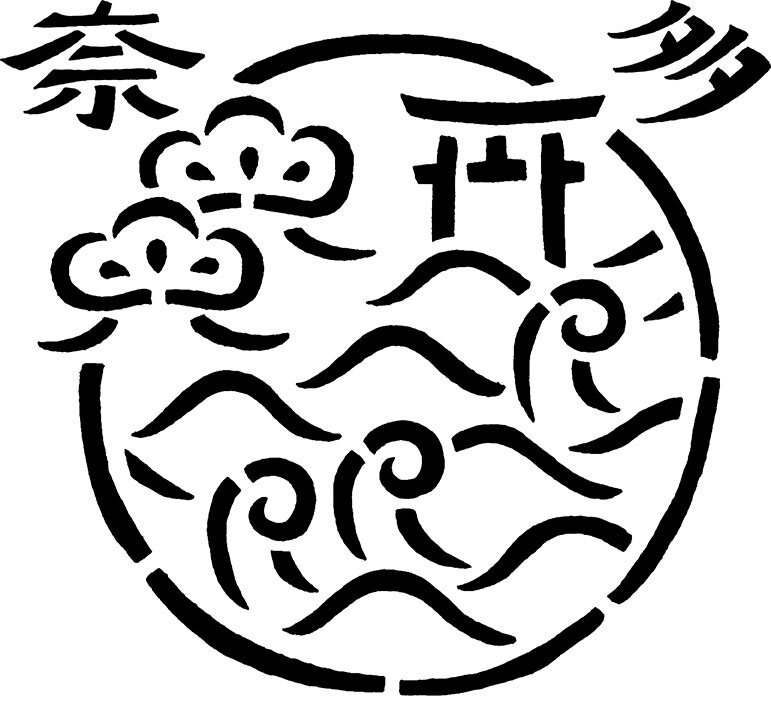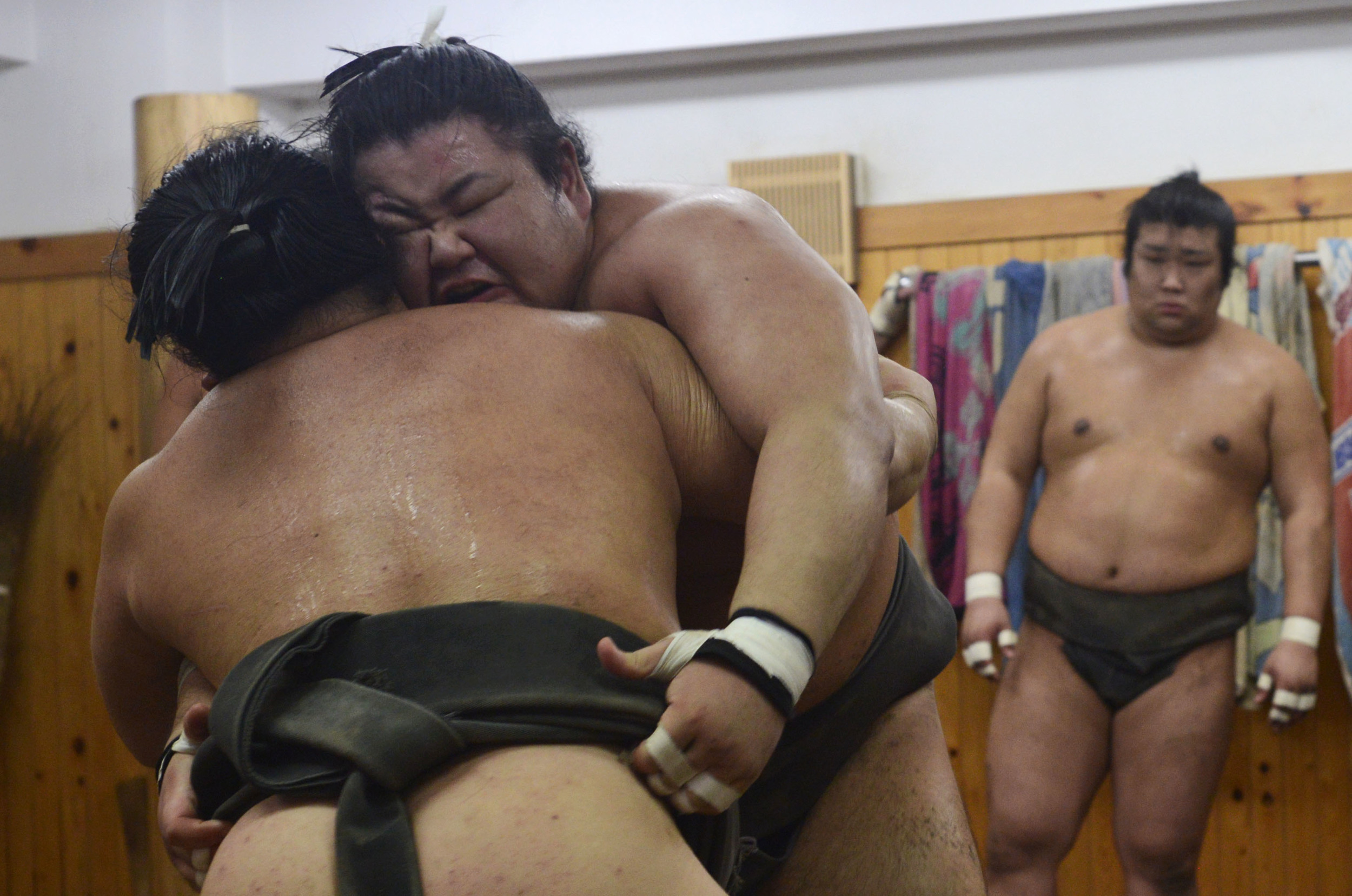
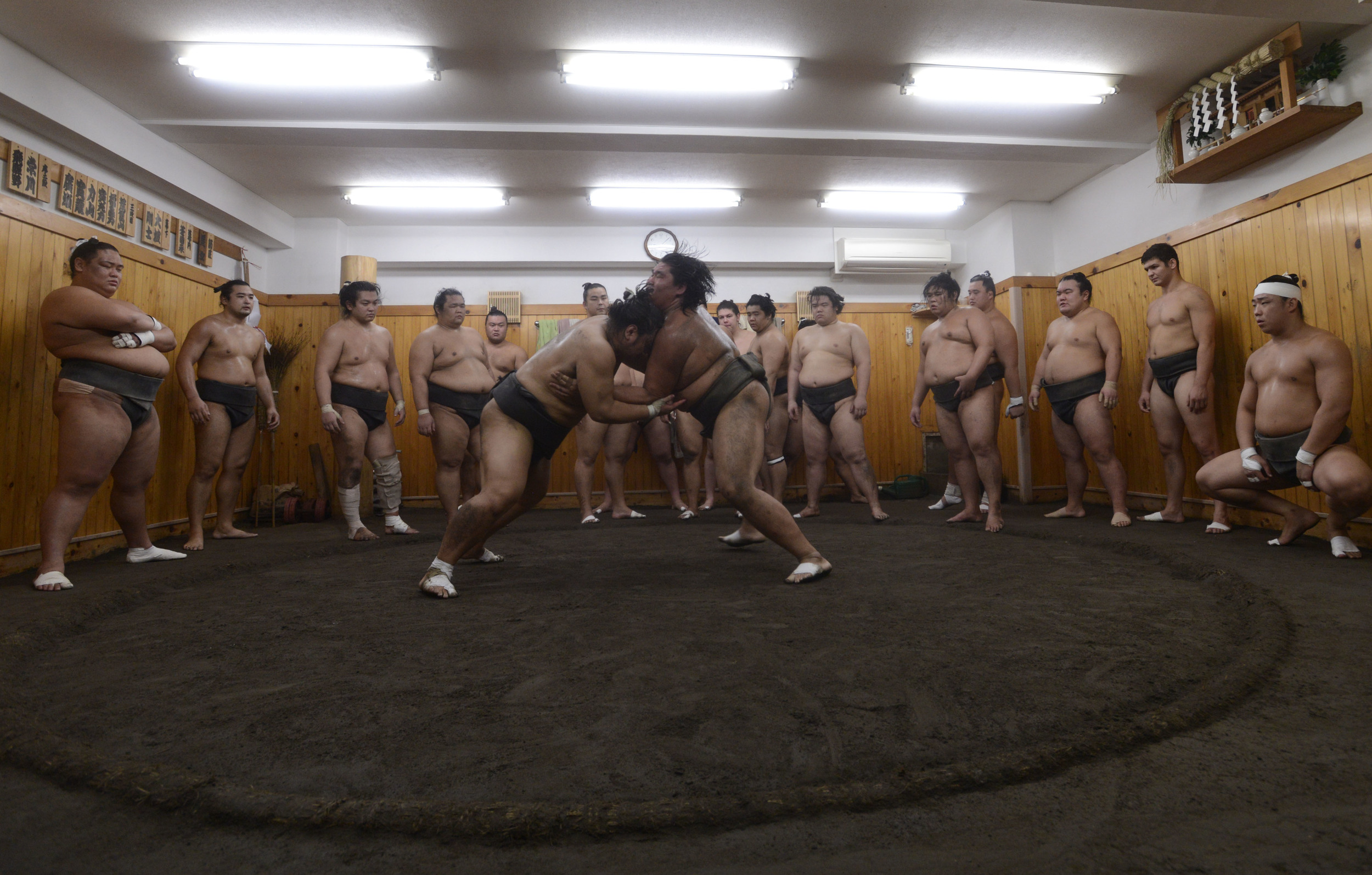
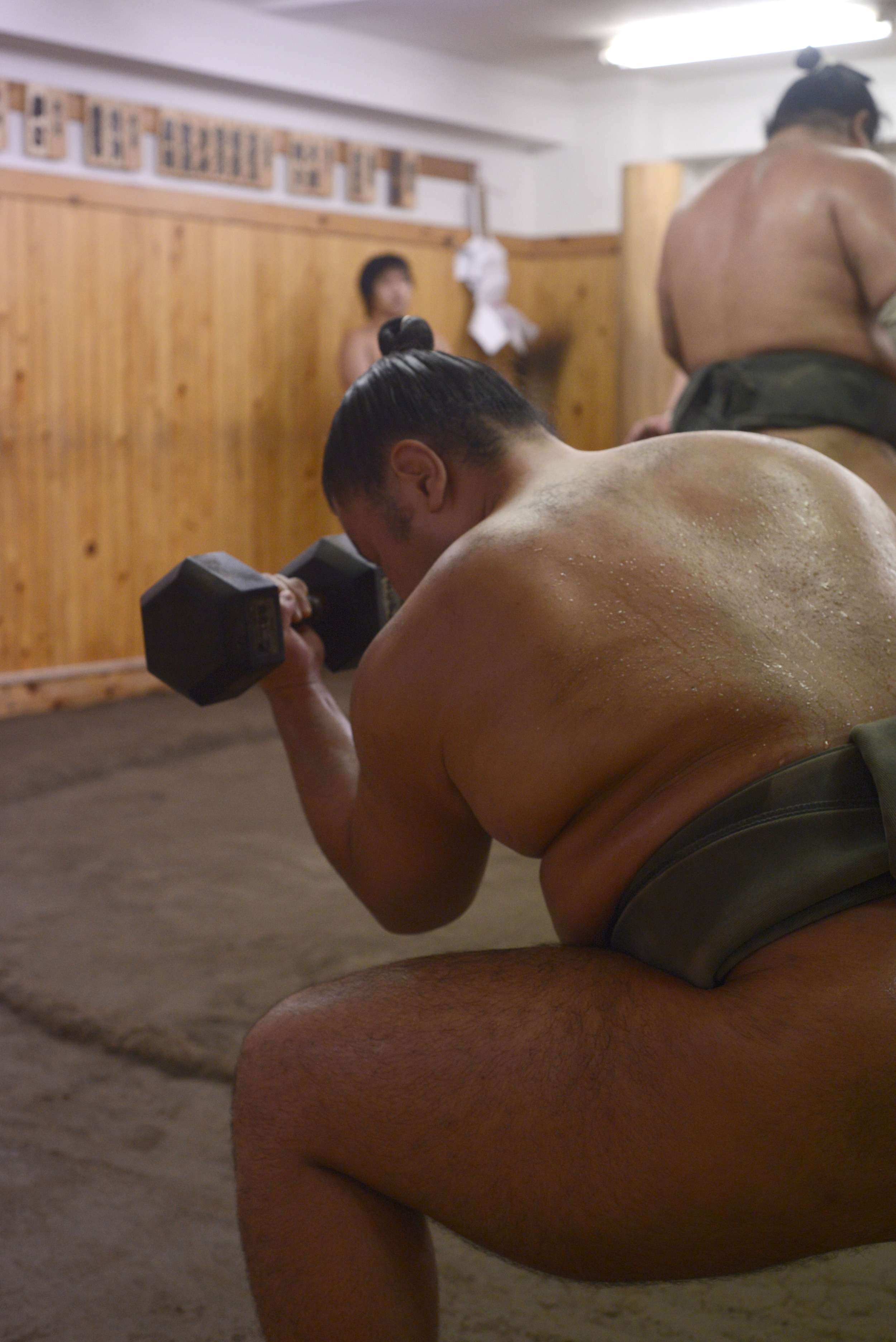
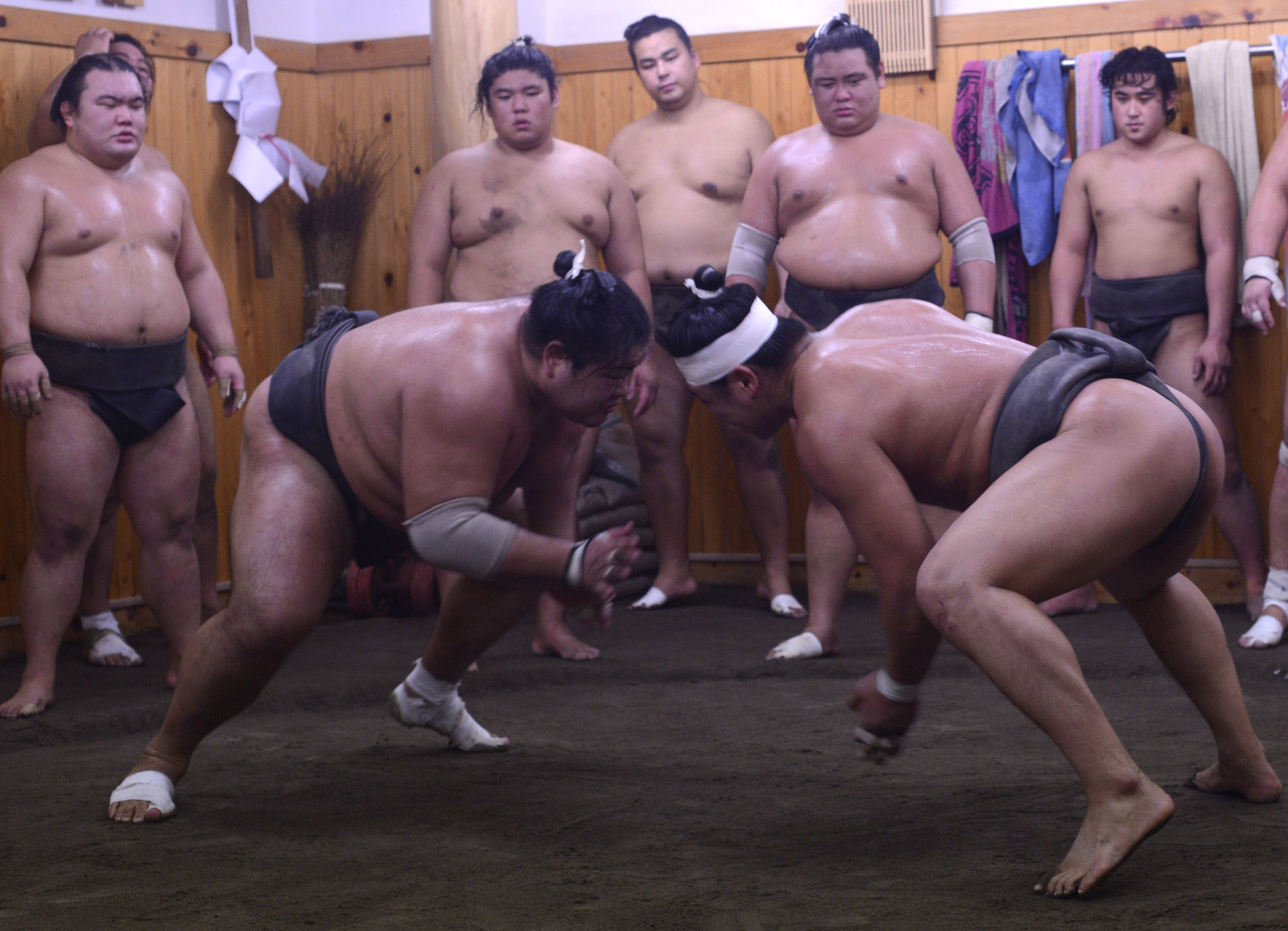

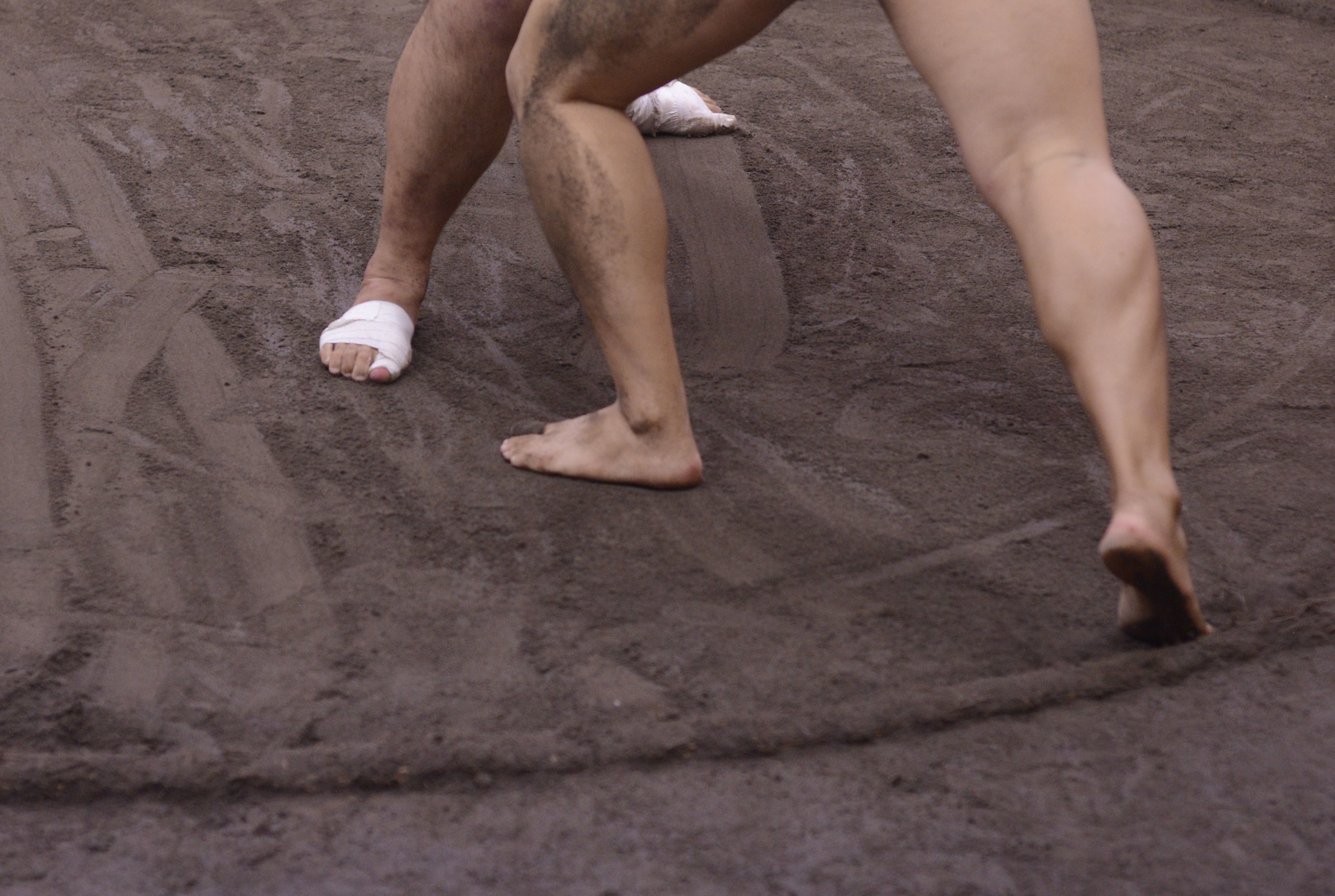
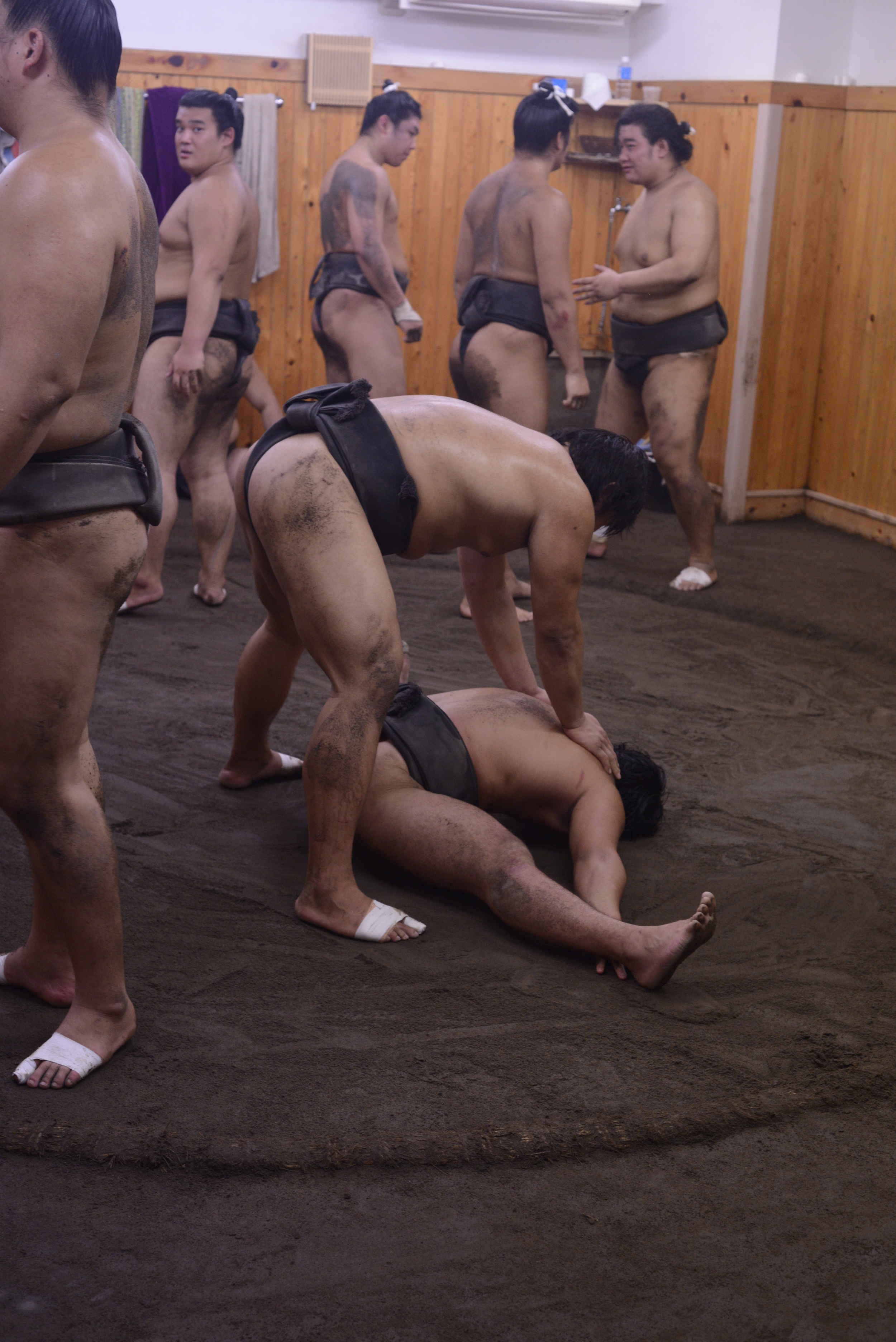
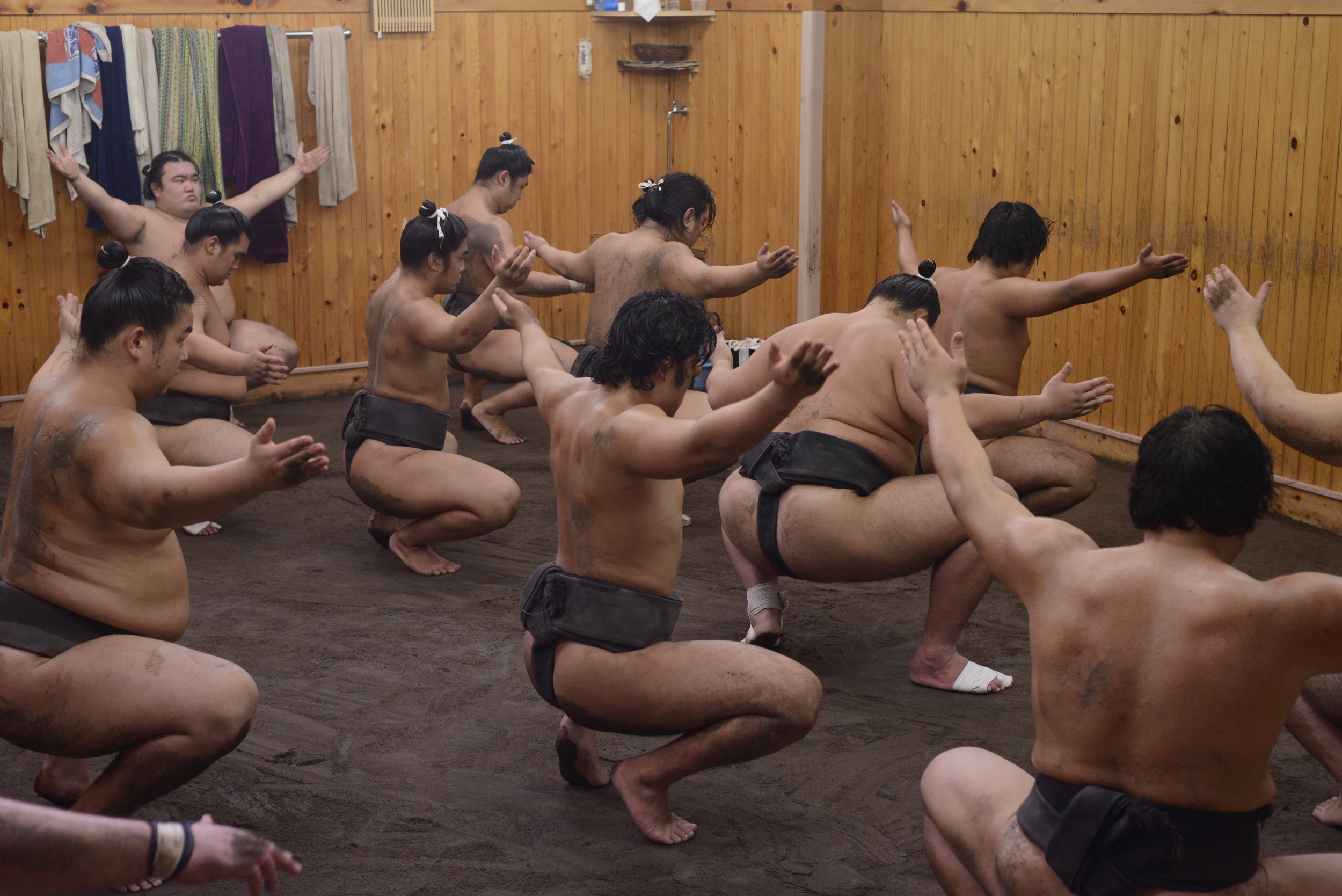
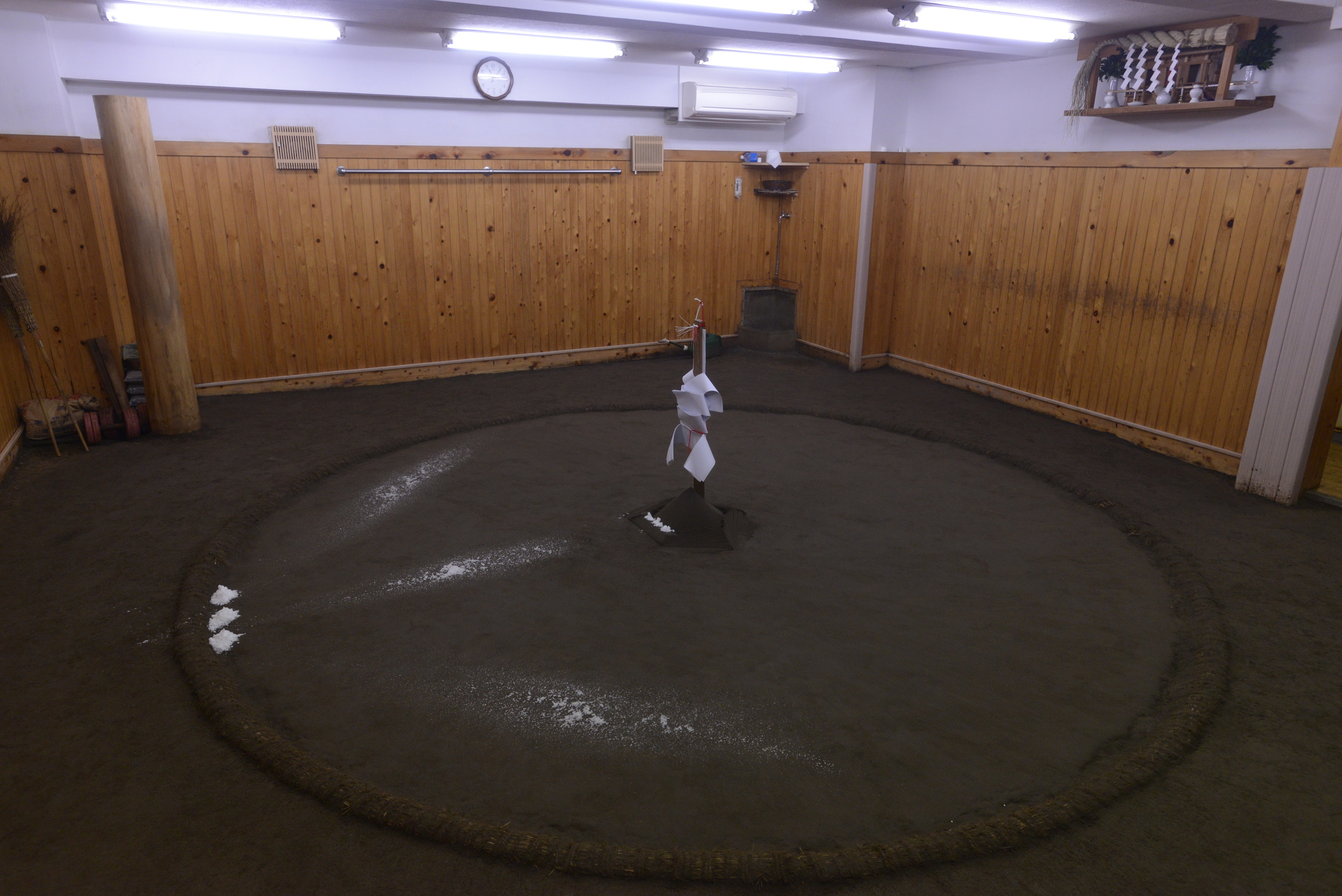
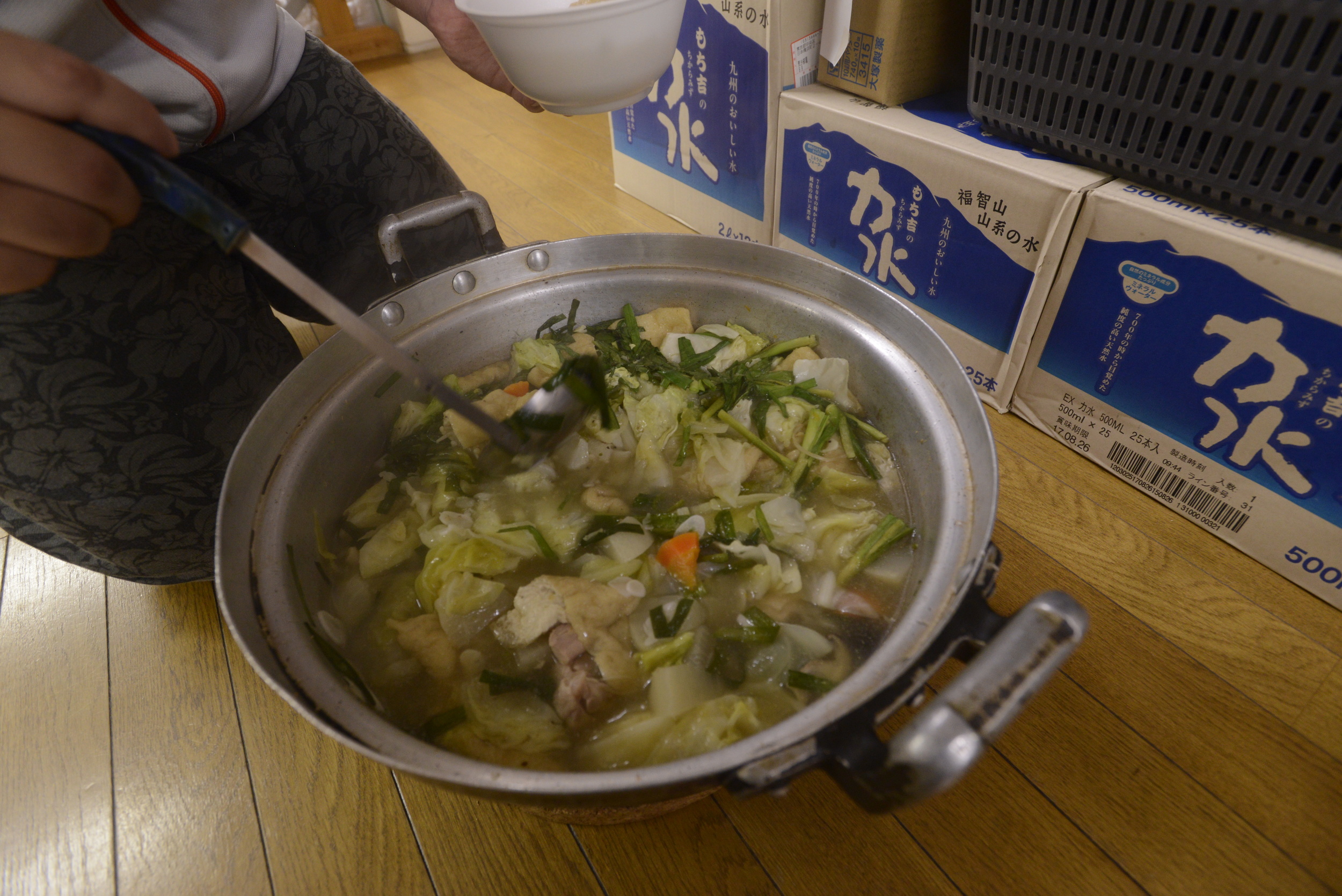
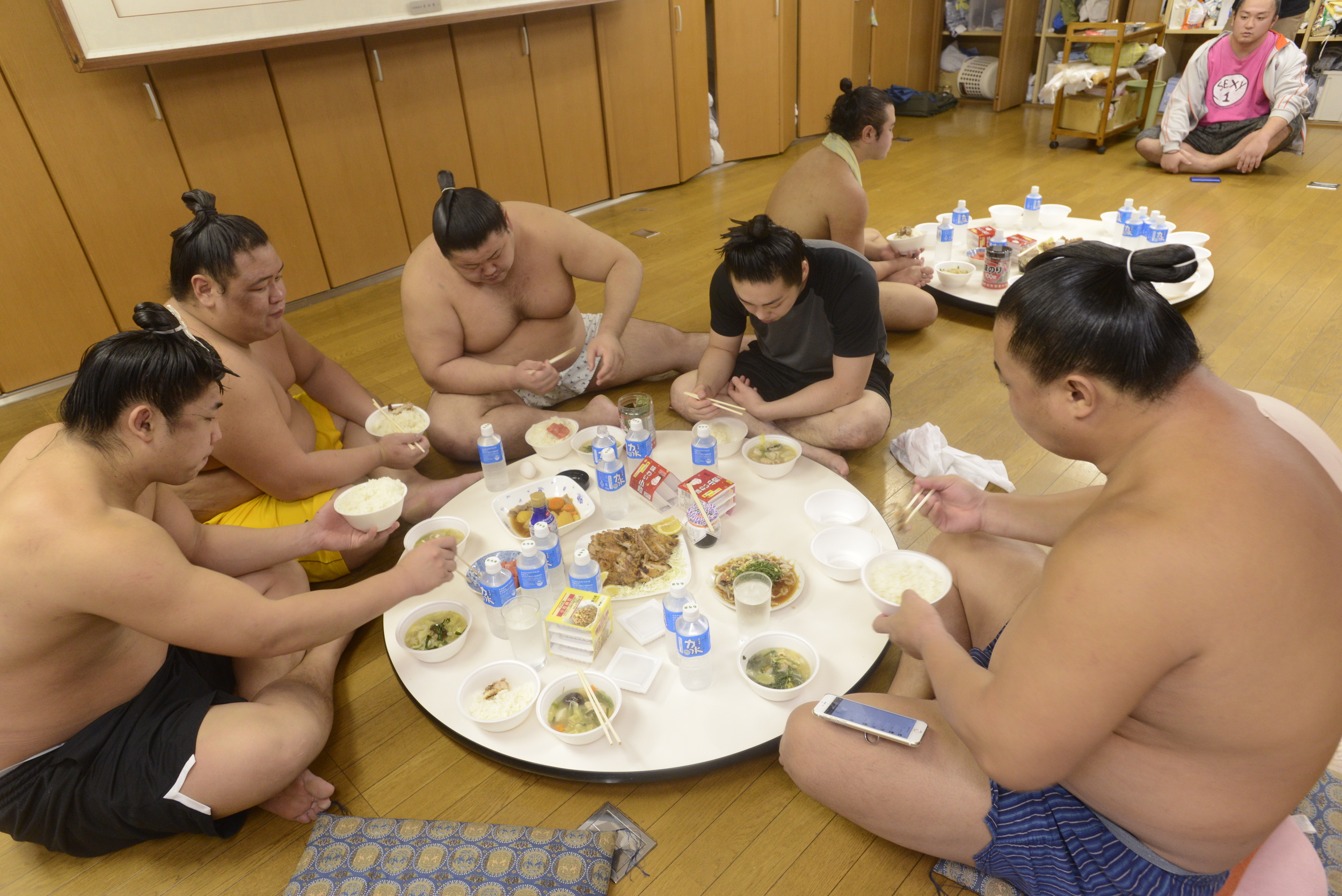
Welcome to Sumo
Photos and story by Tetsuo Nakahara - Published on Stripes Japan
A day with a wrestler
It was 6:30 a.m., the time I’m usually just rolling out of bed. But there I was staring in amazement as large, blubbery men dressed only in what can be described as loincloths with thick belts, slammed into one another with force. I had entered the sacred world of sumo.
My recent visit the Arashio Beya sumo training stable in Tokyo, one of 43 stables that train, feed and house the 800 professional sumo wrestlers in Japan, was an experience I highly recommend to others.
As I sat there with the stench of sweat and moist dirt lingering in the air, 12 sumo wrestlers, or rikishi, took turns squaring off with one another. The action was intense. There was no smack talk or fist bumps coming from the rikishi. Only the brutal sounds of flesh colliding with force and the occasional gasp for air were generated by the huge men. They were focused on one thing: getting prepared for the battles they would face in the September Grand Tournament.
Honestly, it was hard for me to believe how quickly these 330-pounders moved. They pushed, shoved and swatted one another and continued on as the stable master yelled, “Do it again!”
It was interesting to watch older rikishi show younger ones moves as they waited their turn in the stable’s dohyo, or wrestling ring. The respect the younger rikishi give the older ones is clear to see by any outsider. It’s all part of the sumo culture.
It was also clear to see that these beat up, black and blue wrestlers are tough guys who can take pain. During the session I watched, blood streamed from a rikishi’s nose after a forceful open-hand blow was delivered to his face. And most rikishi had bandages on their fingers.
“We don’t count a sprained finger as a wound,” said Fukugoriki, a rikishi at Arashio beya. “It is just a normal thing.”
The morning practice sessions usually end around 11 a.m., depending how the shisho, master of the room, makes a schedule. They usually train six days a week, with the only official time rikishi get time off is the week after each of the six yearly Grand Tournaments.
As this particular morning wrapped up, the rikishi worked on their flexibility. Some of these fat guys were doing the splits. It was amazing. The rikishi, although most doughy looking, are powerful and flexible. They are athletes.
As they left the training area, some of the younger rikishi purified the dohyo with salt. The older ones, like Sokokurai, headed for the showers to clean up for lunch.
“I am focused on staying as a Sekitori (the top category of sumo rank) as long as possible.” said Sokokurai, currently a Maegashira in the Makuuchi Division. “It has been 12 years since I entered Arashio Beya. When I get up on a dohyo, I am totally concentrated on that moment.
“When the Grand Tournament starts, the tension between rikishi is very serious,” Sokokurai said of the 15-day events. “No one talks in the waiting room or when the match starts. I just do my best.”
After showering, the rikishi headed to the second-floor of the building to eat lunch. Amazingly, it is their first meal of the day.
“Because the training is so hard, if you have a breakfast, it upsets your stomach during the practice and you can’t do much,” Fukugoriki explained to an outsider.
But when these behemoths do eat, they can really scarf it down.
On the table, there was grilled chicken, bonito sashimi, meat and potato stew, rice, natto and a big pot called chanko nabe. Chanko nabe is popularly known as a staple food for rikishi. It is a big boiling pot stuffed with vegetables and meat, usually chicken or pork.
It is said that each sumo stable has its own chanko nabe taste. In Arashio Beya, shio (salt) chanko is the main taste, but I was told they mix it up from time to time with miso, soy sauce or kimchi.
Although they eat a lot of chanko nabe, the rikishi also love their rice. The 12 wrestlers from Arashio Beya go through 20 pounds of rice each day.
“I think it is rice that makes a rikishi’s body big,” said Fukugoriki. “I sometimes eat about four big bowls of rice for a meal. Rice is something we grow up with, so I can eat a lot.”
Mine was a rare opportunity to sit down and share a meal with rikishi at their stable. The food was delicious, which is another reason I believe sumo wrestlers are so big. After the long workout, they were relaxed and enjoyed one another’s company as they ate everything in sight.
At 3:30 in the afternoon, the 12 headed back downstairs for another hour of training, pushing each other to reach their goals in the upcoming Grand Tournament.
They would repeat the routine the next day.
How it works
So you’re new to Japan and you’re flipping through the Japanese channels on your TV and you see two giant, almost-naked dudes with a topknot in their hair fighting each other in the dirt. That’s sumo. And it’s actually a sport. And, believe it or not, those fat guys are pretty good athletes.
The sport of sumo is more than 1,500 years old, and is rich in tradition. Although it will probably always be considered Japan’s national sport, scandals surrounding sumo in the past decade have led to a decline in interest and attendance at tournaments. In fact, recent polls show baseball and soccer are now more popular in Japan.
But sumo is still in the mainstream and is a popular event at many festivals and sporting events. And there are many sumo events held across the nation for kids to participate.
If you want to see the professionals go at it, the Japan Sumo Association holds six Grand Tournaments each year. Each tournament, or basho, lasts 15 days and are held in Tokyo (3 times a year), Osaka, Nagoya and Kyushu. The tournaments are also broadcast live on television. And throughout the year, the Japan Sumo Association holds day-long exhibitions across the country.
The rules of sumo are pretty simple. Two sumo wrestlers, or rikishi, grapple and throw each other around in a dohyo, or wrestling ring. The one who forces his opponent out of the dohyo is the winner. Or, if a rikishi touches the ground with any part of his body, he loses.
Interestingly, there are no weight divisions in Sumo. It’s always exciting to see a small rikishi throw a larger opponent to the ground.
There are about 800 rikishi in professional sumo, according to Japan Sumo Association. A Rikishi’s rank is called banzuke, which is based off performances in each tournament. New rankings are announced before each of the six tournaments. Three are several divisions in sumo. The top division is called Makuuchi. In the Makuuchi division, Yokozuna is the Grand Champion, followed by Ozeki, Sekiwake, Komusubi and Maegashira. Other divisions below Makuuchi are Jyuryo, Makushita, Sandanme, Jyonidan and Jyonokuchi.
There are many foreign rikishi who train in Japan. Currently, the three rikishi who hold the rank of Yokozuna - Hakuho, Kakuryu and Harumafuji – are Mongolian.
When you watch sumo, you’ll get a taste of Japanese culture and Shintoism. Sumo is sacred in Japan, so when you see rikishi throwing salt into the dohyo to purify the space, you know you are watching something special and unique to Japan.
For more information: Japan Sumo Association (http://www.sumo.or.jp/en/index)
Check out the September Grand Tournament
When: Sept. 13-27
Where: Ryogoku Kokugi Kan, Tokyo.
Price: varies depending on seat and location. A chair seat on second floor starts at 2,200 yen. The box seat in first floor is from 9,500 to 14,800 yen per person (Note: you sit on the floor in a marked space, but you are given a cushion to sit on.) You can purchase the tickets at Japan Sumo Association website: http://sumo.pia.jp/en/sumo09.jsp (English)
Chat with a rikishi
Name: Fukugoriki
Age: 27
Years in sumo: 10
Current rank: Sandanme
Height: 5.11 feet
Weight: 343 pounds
Home town: Fukushima
Q: How did you become a rikishi?
A: I did sumo from elementary school to high school, and I loved it. After graduating from high school, I pondered whether I should get a normal job or enter a sumo beya. I decided to challenge myself and see what I could accomplish in the sumo world, so I joined Arashio Beya.
Q: What is your goal?
A: I want make Jyuryo division. When Makushita, I was so close to Jyuryo. But then I got injured and dropped down to Sandanme. So, I want to get back in Makushita and aim for Jyuryo. Everyone has injuries, so we all have to get used to it.”
Q: What is the average time a person spends as a rikishi?
A: The average time a person spends as a rikishi is said to be 15 years after entering a sumo beya. But, of course, there are rikishi who quite after three days and some stay longer than 15 years. I want to stay as I can.”
Q: What is the best part being a rikishi?
A: Sumo is something I grew up watching on TV and dreamed of joining when I was growing up. But now my dream has come true, but I still dream to be better. We visit senior citizen’s homes, kindergarten classes and other special places, and it makes me so happy to see people smile when they meet us. Even though I am not a famous rikishi, they are still happy to see me. Since I am from Fukushima, I have had opportunities to visit there and help raise funds. I am happy to help for my hometown.
Q: What is the hardest part of being a rikishi?
A: The practices are very hard. But this is something I chose, so I will do my best no matter how hard it is. It is also hard for me to see my supporters’ faces after I lose.”
Q: What do you think of rikishi as a national sports athlete?
A: “Mage (hair knot of a rikishi) is something only we have. Sumo keeps the old traditions of Japan, and I am proud that I am a part of it. I hope this good tradition will live on forever.”
- See more at: http://japan.stripes.com/news/sumo#sthash.XEBZ5dV0.dpuf
